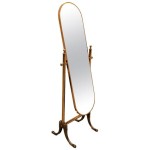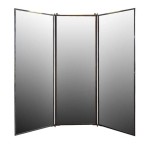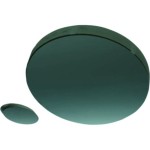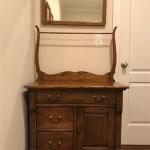Concave Mirror in Headlights of a Car: Essential Aspects and Functions
Headlights are an indispensable safety feature of any vehicle, allowing drivers to see clearly during nighttime or in low-visibility conditions. These lights utilize a combination of components to project light effectively, including a concave mirror. Understanding the significance of a concave mirror in a car's headlights helps us appreciate the intricate engineering behind automotive lighting systems.
A concave mirror is a spherical mirror with its reflective surface curved inward. This curvature plays a crucial role in manipulating the direction of light. Light rays originating from a point source positioned at the mirror's center of curvature, also known as the focal point, are reflected parallel to the mirror's principal axis. This principle is instrumental in the operation of a car's headlights.
In a typical car headlight, the filament of the light bulb is placed at the focal point of the concave mirror. When the bulb is illuminated, light rays emitted from the filament strike the mirror's surface. Due to the mirror's curvature, the light rays are reflected in parallel beams. This parallel arrangement of light rays allows the headlights to project a focused beam of light over a greater distance, enhancing visibility for the driver.
The shape of the concave mirror also contributes to the headlight's beam pattern. The mirror's curvature determines the angle at which the light rays are reflected. By carefully designing the mirror's shape, engineers can control the spread and intensity of the headlight beam. This customization ensures that the headlights provide optimal illumination without causing excessive glare to oncoming traffic.
Furthermore, the use of a concave mirror in headlights helps reduce spherical aberration. Spherical aberration is an optical phenomenon that causes light rays to focus at slightly different points depending on their angle of incidence on the mirror. The curvature of a concave mirror minimizes this effect, resulting in a more precise and focused beam of light. This high precision is crucial for achieving clear and effective illumination during nighttime driving.
In summary, the concave mirror plays a pivotal role in the design and operation of a car's headlights. Its ability to reflect light rays in parallel beams and control the beam pattern enhances visibility for the driver while minimizing glare for oncoming vehicles. The careful shaping and positioning of the mirror within the headlight assembly ensure that drivers have optimal illumination when navigating through darkness or low-visibility conditions.

Car Headlights

Why Headlights Used Concave Mirror

Which Mirror Is Used In The Headlights Of A Car

Concave Vs Convex Mirrors In Cars

How A Concave Mirror Is Used In Headlights And Searchlights To Throw Light At Long Distance Homework Study Com
Why Is A Parabolic Mirror Preferred Than Concave As Headlight Quora

Concave Vs Convex Mirrors In Cars

Why Are Concave Mirrors Used In Headlights Socratic

Spherical Mirror Structure Types Terminologies

State The Type Of Mirrors Used For I Headlights And Ii Rearview In Cars Motorcycles Give Reason To Justify Your Answer Each Case








